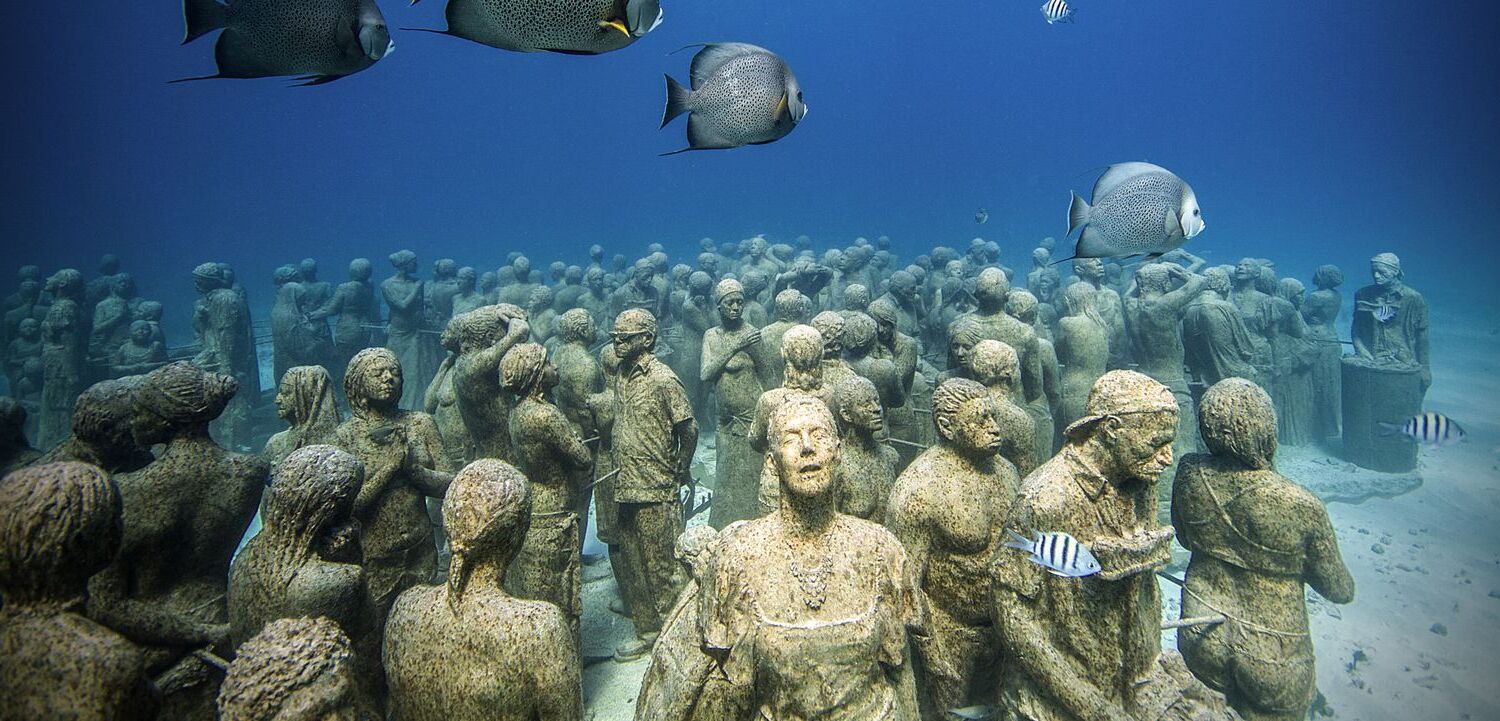
Did you know that entire cities lie hidden beneath the waves? These sunken cities hold secrets of ancient civilizations, waiting to be discovered. From the legendary Atlantis to the real-life ruins of Heracleion, these submerged metropolises offer a glimpse into the past. Imagine walking through streets that once bustled with life, now silent and covered in coral. Why did these cities sink? Natural disasters, rising sea levels, and even human activities played a role. What treasures do they hold? Artifacts, statues, and remnants of daily life lie preserved underwater. Dive into these 35 facts about sunken cities and uncover the mysteries lurking below the surface.
Key Takeaways:
- Sunken cities like Atlantis and Heracleion hold ancient secrets and are being preserved with advanced technology, but face challenges from climate change and looting.
- The study of sunken cities is an exciting field with potential for new discoveries and interdisciplinary research, while efforts are made to balance tourism and preservation.
Ancient Cities Beneath the Waves
Sunken cities have fascinated historians, archaeologists, and adventurers for centuries. These submerged metropolises hold secrets of ancient civilizations, lost to time and water. Let's dive into some intriguing facts about these underwater wonders.
-
Atlantis: Perhaps the most famous sunken city, Atlantis was first mentioned by the philosopher Plato. He described it as an advanced civilization that sank into the ocean in a single day and night.
-
Heracleion: Also known as Thonis, this Egyptian city was discovered underwater in 2000. It was a major port city before Alexandria was founded.
-
Pavlopetri: Located off the coast of Greece, Pavlopetri is one of the oldest submerged cities, dating back to around 2800 BCE. It features well-preserved streets, buildings, and tombs.
-
Port Royal: Once known as the "wickedest city on Earth," Port Royal in Jamaica sank into the sea after an earthquake in 1692. It was a notorious pirate haven.
-
Baiae: This Roman city was a luxurious resort for the elite. It gradually sank due to volcanic activity and now lies beneath the Bay of Naples.
Technological Marvels and Natural Disasters
Some sunken cities were technological marvels of their time, while others fell victim to natural disasters. Here are some fascinating details about these submerged wonders.
-
Yonaguni Monument: Found off the coast of Japan, this underwater structure has sparked debates about whether it is man-made or a natural formation. Its origins remain a mystery.
-
Shicheng: Known as the "Lion City," Shicheng in China was intentionally flooded in 1959 to create a reservoir. It remains remarkably well-preserved underwater.
-
Olous: This ancient Greek city on the island of Crete sank due to seismic activity. Its ruins can still be seen beneath the clear waters.
-
Canopus: An Egyptian city dedicated to the god Serapis, Canopus was submerged by rising sea levels and earthquakes. It was a center of worship and healing.
-
Phanagoria: Located in the Black Sea, this ancient Greek city was partially submerged due to tectonic shifts. It was a major trading hub in its time.
Mysteries and Legends
Sunken cities are often shrouded in mystery and legend, captivating the imagination of many. Here are some intriguing tales and facts about these underwater cities.
-
Kish: An ancient Sumerian city, Kish is believed to have been submerged by a great flood mentioned in the Epic of Gilgamesh.
-
Dwarka: According to Hindu mythology, Dwarka was the city of Lord Krishna. Archaeological evidence suggests it may have been submerged by rising sea levels.
-
Helike: This Greek city was destroyed by an earthquake and tsunami in 373 BCE. It was rediscovered in the 1990s.
-
Rungholt: Known as the "Atlantis of the North Sea," Rungholt was a wealthy medieval city that sank during a storm tide in 1362.
-
Lion City of Quiandao Lake: This Chinese city was submerged to create a hydroelectric dam. It is now a popular site for divers.
Modern Discoveries and Research
Advancements in technology have allowed researchers to uncover and study these sunken cities in greater detail. Here are some recent discoveries and ongoing research efforts.
-
Pavlopetri Mapping: Modern technology has enabled detailed mapping of Pavlopetri, revealing its complex urban layout.
-
Heracleion Artifacts: Numerous artifacts, including statues and coins, have been recovered from Heracleion, providing insights into its history.
-
Baiae's Mosaics: The underwater ruins of Baiae feature stunning mosaics, showcasing the city's opulent past.
-
Port Royal Excavations: Ongoing excavations at Port Royal have uncovered well-preserved buildings and artifacts, shedding light on its pirate history.
-
Yonaguni Research: Scientists continue to study the Yonaguni Monument, using advanced imaging techniques to determine its origins.
Cultural Significance and Preservation
Sunken cities hold immense cultural significance and efforts are being made to preserve these underwater heritage sites. Here are some facts about their cultural importance and preservation efforts.
-
UNESCO Protection: Many sunken cities are protected under UNESCO's Convention on the Protection of the Underwater Cultural Heritage.
-
Tourism: Some sunken cities, like Shicheng and Baiae, have become popular tourist destinations for divers.
-
Virtual Reconstructions: Advances in technology have allowed for virtual reconstructions of sunken cities, enabling people to explore them without diving.
-
Educational Programs: Various educational programs and documentaries have been created to raise awareness about the importance of preserving sunken cities.
-
Collaborative Research: International collaborations between archaeologists, historians, and scientists have led to significant discoveries and preservation efforts.
Environmental Impact and Challenges
The preservation of sunken cities faces numerous challenges, including environmental factors and human activities. Here are some facts about the environmental impact and challenges faced in preserving these underwater sites.
-
Climate Change: Rising sea levels and changing ocean conditions pose a threat to the preservation of sunken cities.
-
Pollution: Pollution from human activities can damage underwater archaeological sites, making preservation efforts more difficult.
-
Marine Life: Marine life can both help and hinder the preservation of sunken cities. While some organisms can cause damage, others can help protect structures by forming natural barriers.
-
Looting: Illegal looting and treasure hunting pose a significant threat to the preservation of sunken cities and their artifacts.
-
Funding: Securing funding for underwater archaeological research and preservation can be challenging, limiting the scope of preservation efforts.
Future Prospects and Discoveries
The study of sunken cities is an ever-evolving field, with new discoveries and advancements on the horizon. Here are some facts about the future prospects and potential discoveries in the study of sunken cities.
-
Advanced Technology: Continued advancements in technology, such as underwater drones and imaging techniques, will enable more detailed exploration and mapping of sunken cities.
-
New Discoveries: As technology improves, new sunken cities and artifacts are likely to be discovered, providing further insights into ancient civilizations.
-
Interdisciplinary Research: Collaboration between different fields, such as archaeology, marine biology, and geology, will lead to a more comprehensive understanding of sunken cities.
-
Public Engagement: Increased public interest and engagement in the study of sunken cities will help raise awareness and support for preservation efforts.
-
Sustainable Tourism: Developing sustainable tourism practices for sunken cities will help balance the need for preservation with the economic benefits of tourism.
Hidden Worlds Beneath the Waves
Sunken cities hold a treasure trove of history and mystery. These submerged metropolises offer glimpses into ancient civilizations, revealing how people lived, thrived, and sometimes vanished. From Atlantis to Dwarka, each site tells a unique story, blending myth and reality. Exploring these underwater ruins not only satisfies our curiosity but also helps us understand the past better. Advances in technology make it easier to uncover these hidden worlds, bringing their secrets to light. Whether you're a history buff or just love a good mystery, sunken cities captivate the imagination. They remind us of the power of nature and the resilience of human spirit. So next time you hear about a new underwater discovery, remember, it's not just about the ruins; it's about the stories they tell and the lessons they offer. Dive into the past and let these ancient cities inspire you.
Frequently Asked Questions
Was this page helpful?
Our commitment to delivering trustworthy and engaging content is at the heart of what we do. Each fact on our site is contributed by real users like you, bringing a wealth of diverse insights and information. To ensure the highest standards of accuracy and reliability, our dedicated editors meticulously review each submission. This process guarantees that the facts we share are not only fascinating but also credible. Trust in our commitment to quality and authenticity as you explore and learn with us.


